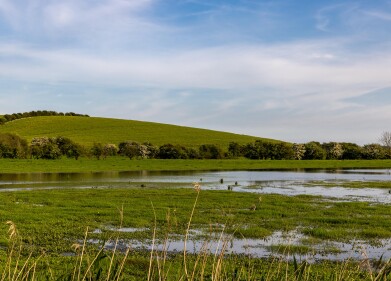Water Pollution Monitoring
What Happens to Data Collected from Water Quality Monitoring?
Apr 05 2015
A huge 71% of the Earth’s surface is covered by water. This means that the overall quality of the world’s H2O has a serious impact on the health of humanity and the natural environment. Scientists, governments and the general population have a thorough appreciation for this fact and are committed to carrying out water quality monitoring projects across the globe. But what happens to the data once it has been collected? Read on for an overview of how it’s used, and what makes it so incredibly important.
But first, if you’d like a better understanding of water monitoring, you can read about it in action in this article: Water Pollution in Asia – A Brief Review of Monitoring Technologies.
What is monitored?
Before looking at how water quality monitoring data is used, it’s important to understand what sort of information is being collected. Different projects will look at different indicators however in general, these are some of the key factors that are considered:
- Water temperature
- Dissolved oxygen
- pH levels
- Salinity
- Nutrients
- Metals
- Faecal contamination
- Erosion
- The presence of undesirable elements in marine life
- Chemical content of crops
Working towards a healthier planet
The main purpose of collecting water quality monitoring data is to enhance the health of the natural environment. There is a primary focus on pollution, however other factors are also considered. In turn, this creates a healthier world for humans, plants and animals to live in. Below are some of the key ways data is used:
- Identify current problems in water bodies
- Pinpoint any existing or emerging trends
- Develop pollution management strategies
- Monitor progress and measure results
- Respond to aquatic emergencies such as oil spills and mass erosion
- Ensure standards are being complied with
- Plan for the future
Public, private and cooperative
As well as state, local and federal agencies, private organisations also carry out their own assessments. Sometimes these are independently commissioned and sometimes they are ordered by the government.
Computerised technology
Computers have become commonplace in the contemporary world and the water quality monitoring sector is not exempt. Today, agencies and organisations all over the world rely on computerised data systems to store, manage and share information. For example, in the US scientists use the EPA’s STORET system which encompasses data from state, local and federal agencies, as well as a number of private entities such as volunteer projects and university studies. This gives users the freedom to access, analyse, summarise and use water quality data at their fingertips.
Legal compliance
Sometimes, water quality monitoring data is used to ensure that communities, corporations and even countries are complying with legislative standards. In the US, states must submit information about the quality of their local water sources to EPA every two years. After receiving data from every state, EPA summarises the information into the National Water Quality Inventory.
Whether used to protect endangered species, determine how pesticides affect nearby rivers or develop long-term strategies for the future, water quality monitoring data is an increasingly important part of creating a healthier planet.
Digital Edition
AET 28.4 Oct/Nov 2024
November 2024
Gas Detection - Go from lagging to leading: why investment in gas detection makes sense Air Monitoring - Swirl and vortex meters will aid green hydrogen production - Beyond the Stack: Emi...
View all digital editions
Events
Dec 02 2024 London, UK
Dec 03 2024 Dusseldorf, Germany
Dec 11 2024 Shanghai, China
Jan 12 2025 Abu Dhabi, UAE
Jan 14 2025 Abu Dhabi, UAE


-min.jpg)





.jpg)










